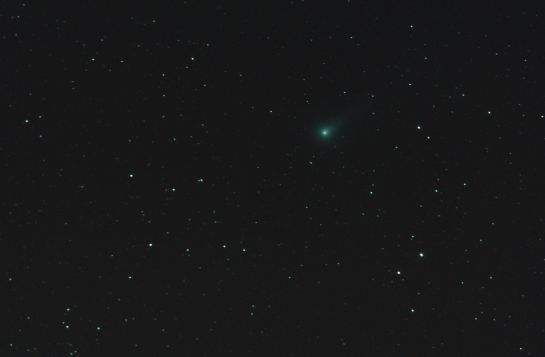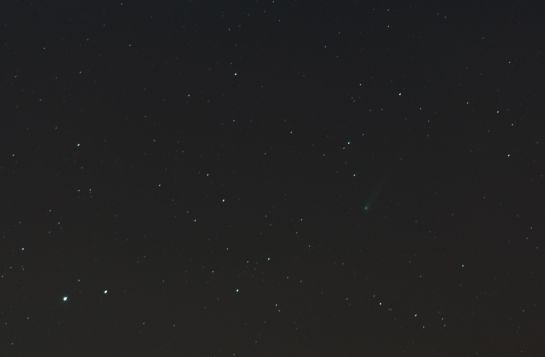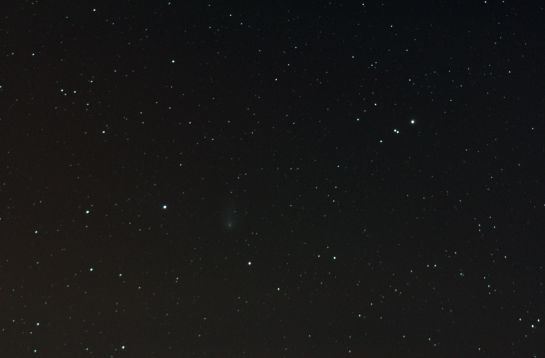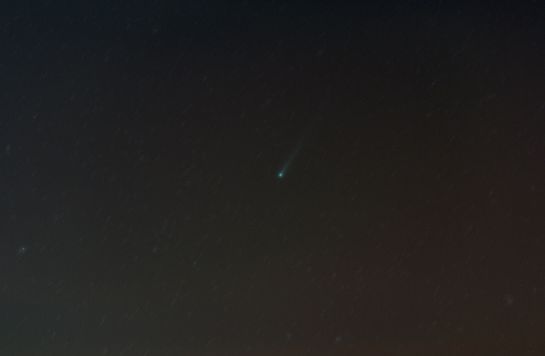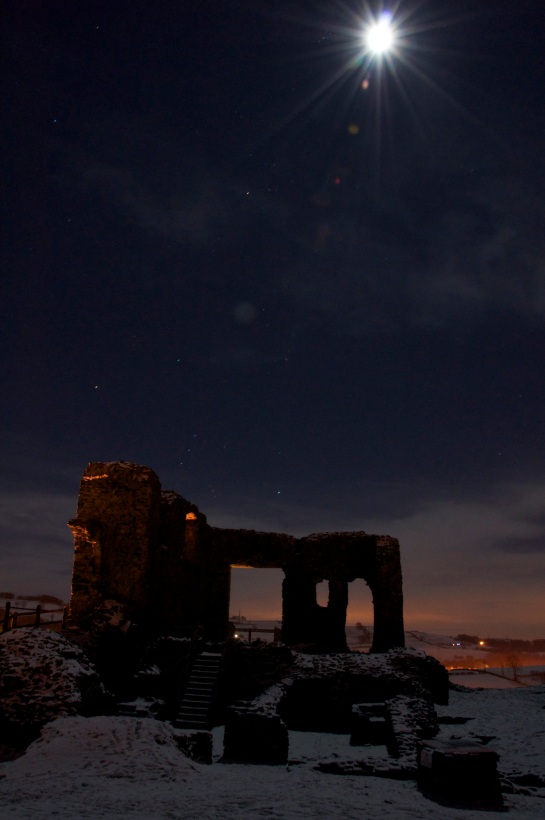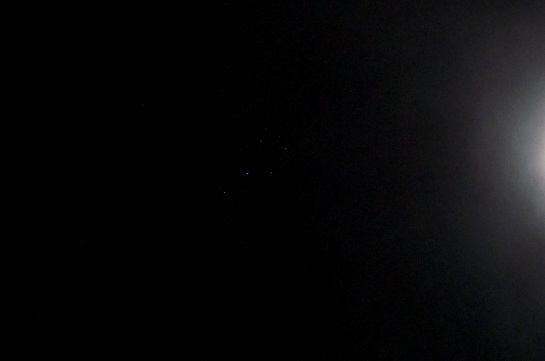Members of the Eddington Astronomical Society met at Kendal Castle early on Sunday morning (was that really only yesterday?), to have a look for comet ISON. There was a good turnout, which meant my photography session wasn’t quite the lonely vigil it usually is. I guess that was down to the presence of the Discovery Channel who are making a documentary about comet hunting, organised through our society Secretary the tireless astronomy outreacher Stuart Atkinson. To be honest, I was really only there to boost the numbers, as I didn’t think the seeing would be too good – the forecast was well over 90% humidity.
But the humidity wasn’t too bad, especially in our elevated position up Castle Hill, and it was great fun to be staring at the sky with friends for a change!
For the most part, it made sense to stick with the 6 x 60-seconds at ISO 1600 on the new 300mm lens at f/5.6. I have the dark frames and flat frames for this combination already on file.
First up, comet Lovejoy, very easy to find at an elevation of 54 degrees, well above the mist, and just north of the Beehive Cluster in Cancer.
PixInsight allows stacking on the comet centre, so the starts are slightly trailed.
Then on to ISON, by star-hopping from Regulus through Mars straight down the ecliptic.
ISON doesn’t present as well as Lovejoy, owing to its position nearer the horizon.
That went well, so a quick trip over to LINEAR, rising next to Arcturus.
LINEAR doesn’t look anywhere near as good as last week’s capture.
After that, I left the camera running, for twenty more frames of ISON.
These have processed quite well in PixInsight to remove most of the sky glow. I might return to these frames and see if I can’t eliminate more of that background colour. I’d also like to try putting the comet back onto a set of frames stacked on the stars.
